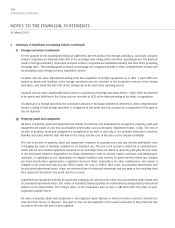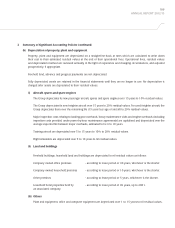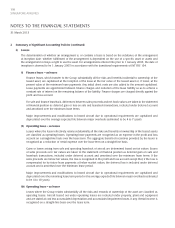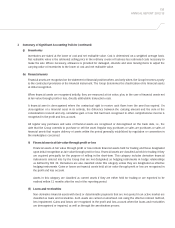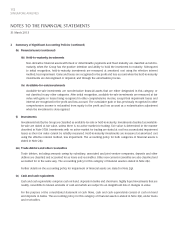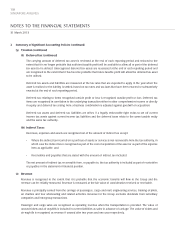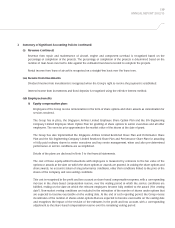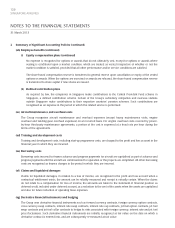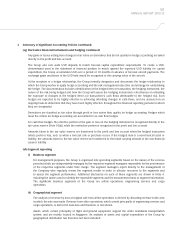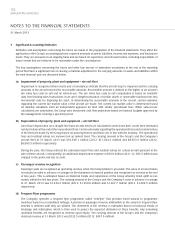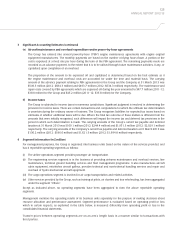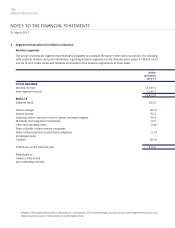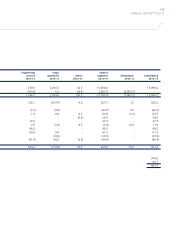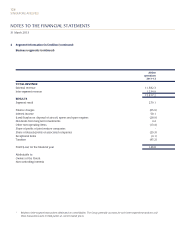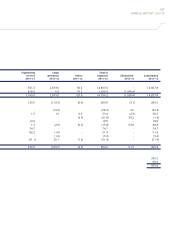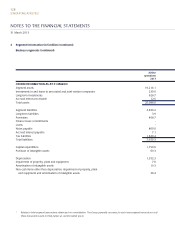Singapore Airlines 2013 Annual Report Download - page 120
Download and view the complete annual report
Please find page 120 of the 2013 Singapore Airlines annual report below. You can navigate through the pages in the report by either clicking on the pages listed below, or by using the keyword search tool below to find specific information within the annual report.
118
SINGAPORE AIRLINES
NOTES TO THE FINANCIAL STATEMENTS
2 Summary of Significant Accounting Policies (continued)
(y) Taxation (continued)
(ii) Deferred tax (continued)
The carrying amount of deferred tax asset is reviewed at the end of each reporting period and reduced to the
extent that it is no longer probable that sufficient taxable profit will be available to allow all or part of the deferred
tax asset to be utilised. Unrecognised deferred tax assets are reassessed at the end of each reporting period and
are recognised to the extent that it has become probable that future taxable profit will allow the deferred tax asset
to be utilised.
Deferred tax assets and liabilities are measured at the tax rates that are expected to apply in the year when the
asset is realised or the liability is settled, based on tax rates and tax laws that have been enacted or substantively
enacted at the end of each reporting period.
Deferred tax relating to items recognised outside profit or loss is recognised outside profit or loss. Deferred tax
items are recognised in correlation to the underlying transaction either in other comprehensive income or directly
in equity and deferred tax arising from a business combination is adjusted against goodwill on acquisition.
Deferred tax assets and deferred tax liabilities are offset, if a legally enforceable right exists to set off current
income tax assets against current income tax liabilities and the deferred taxes relate to the same taxable entity
and the same tax authority.
(iii) Indirect Taxes
Revenues, expenses and assets are recognised net of the amount of indirect tax except:
• Where the indirect tax incurred on a purchase of assets or services is not recoverable from the tax authority, in
which case the indirect tax is recognised as part of the cost of acquisition of the asset or as part of the expense
item as applicable; and
• Receivables and payables that are stated with the amount of indirect tax included.
The net amount of indirect tax recoverable from, or payable to, the tax authority is included as part of receivables
or payables in the statement of financial position.
(z) Revenue
Revenue is recognised to the extent that it is probable that the economic benefits will flow to the Group and the
revenue can be reliably measured. Revenue is measured at the fair value of consideration received or receivable.
Revenue is principally earned from the carriage of passengers, cargo and mail, engineering services, training of pilots,
air charters and tour wholesaling and related activities. Revenue for the Group excludes dividends from subsidiary
companies and intra-group transactions.
Passenger and cargo sales are recognised as operating revenue when the transportation is provided. The value of
unused tickets and air waybills is included in current liabilities as sales in advance of carriage. The value of tickets and
air waybills is recognised as revenue if unused after two years and one year respectively.
31 March 2013


